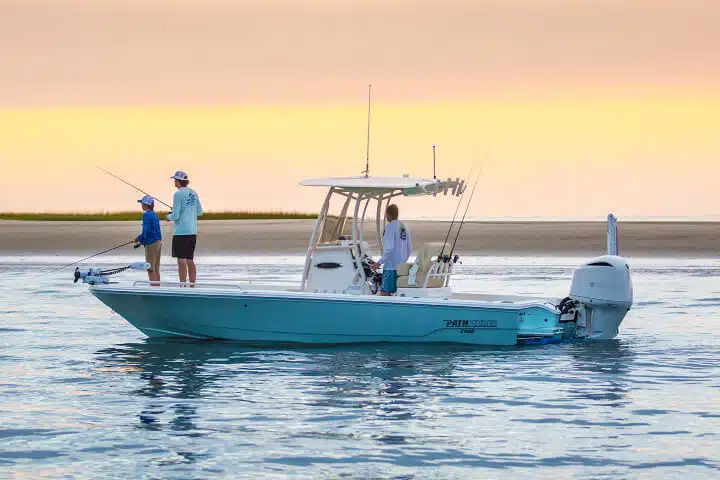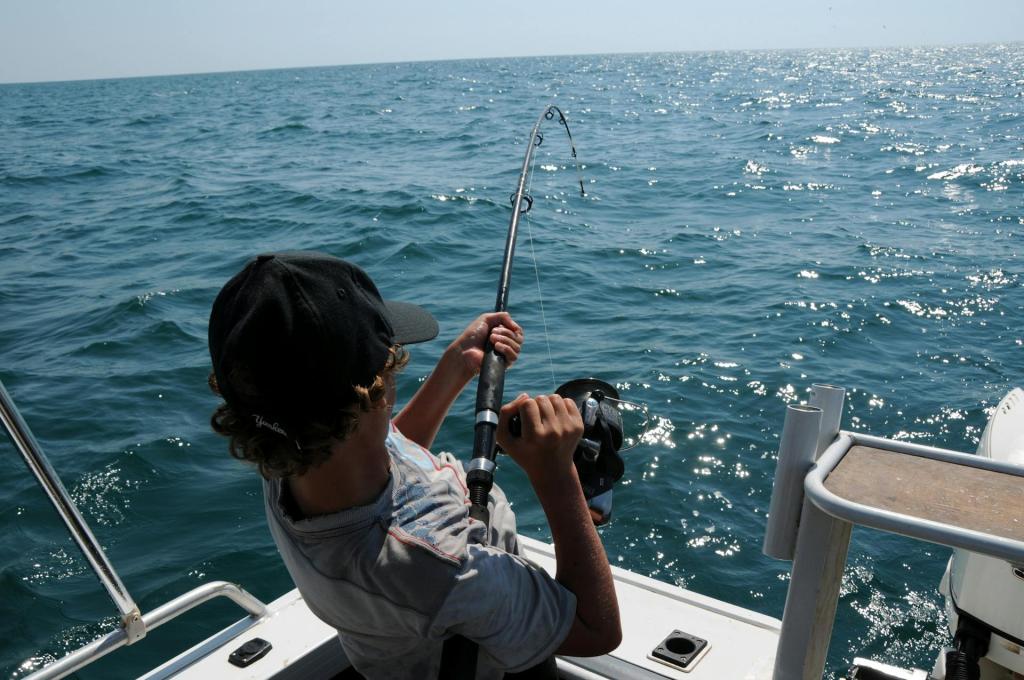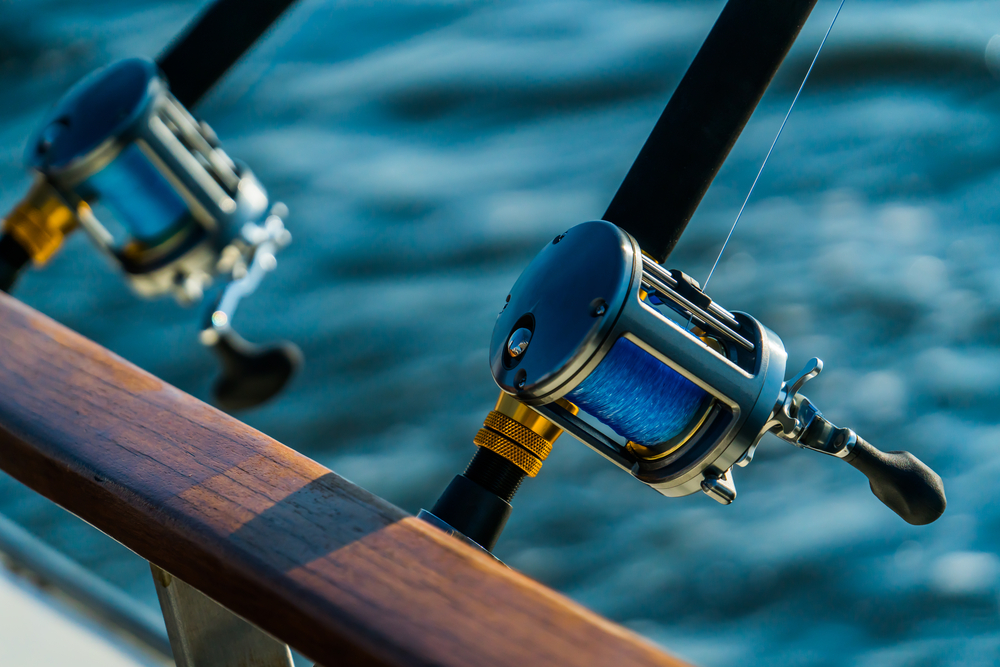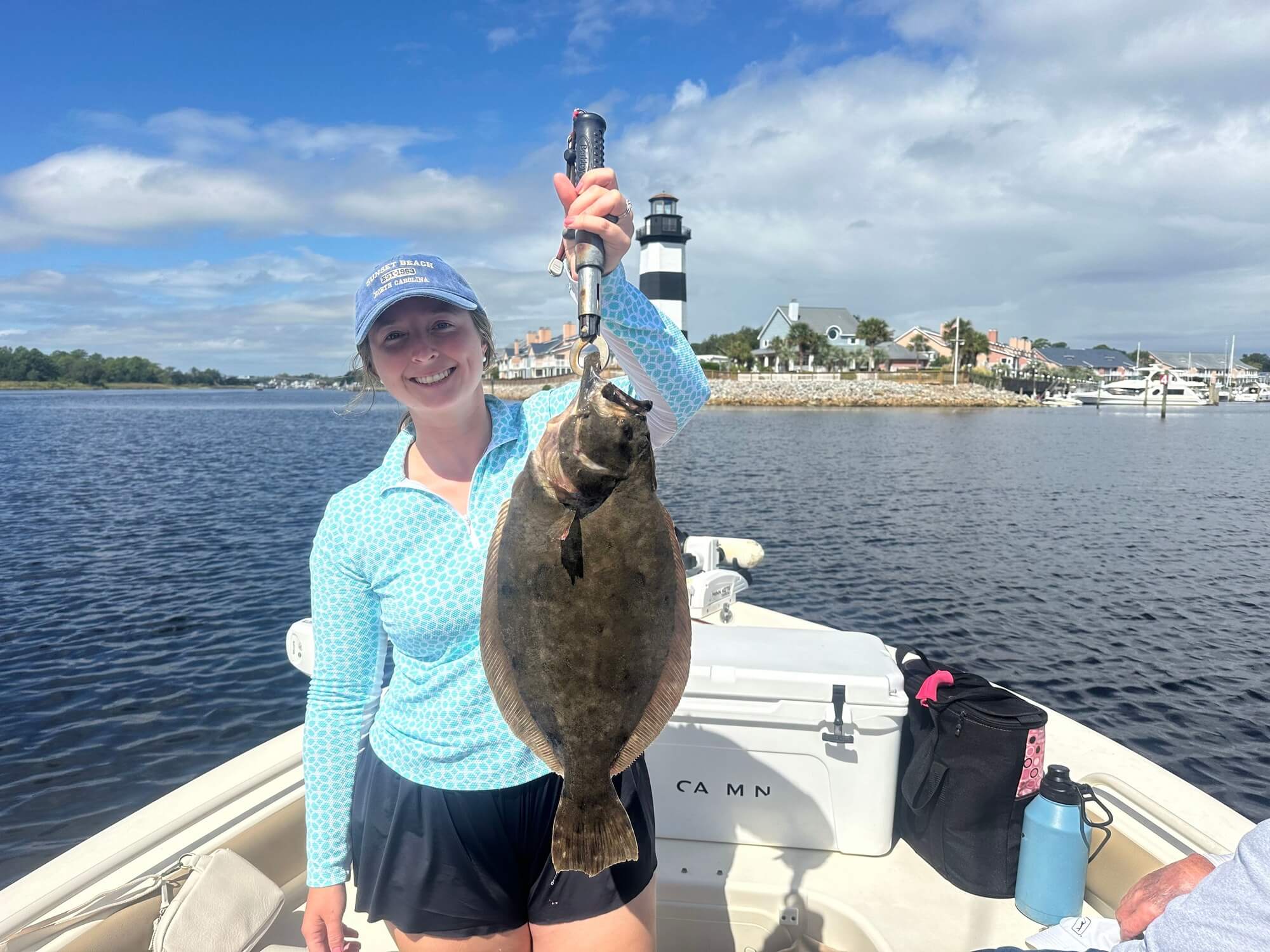Estimated reading time: 4 minutes

Inshore fishing, or bay fishing, is more than just a sport—it’s an adventure waiting to unfold. The salty breeze kisses your skin, the boat sways with the rhythm of the waves, and every cast holds the promise of a thrilling catch. Will you hook a feisty redfish, a sly flounder, or something completely unexpected? The suspense keeps you coming back for more. Whether you’re a seasoned pro or a curious beginner, inshore fishing blends excitement with the serene beauty of coastal waters. Get ready to make unforgettable fishing memories. In this guide, we’ll cover everything you need to get started. Let’s dive in!
Why Inshore Fishing?

Inshore fishing offers a perfect blend of relaxation and excitement, making it a favorite for anglers of all skill levels. Unlike offshore or deep-sea fishing, bays provide calmer waters, making them ideal for beginners or those who prefer a smoother ride. These coastal havens serve as nurseries for countless fish species, creating an ecosystem teeming with redfish, speckled trout, flounder, and even the occasional tarpon.
The mix of sandy bottoms, grassy flats, and oyster beds makes for diverse fishing opportunities, where each cast holds the promise of something new. Bay fishing is pure sensory bliss—salty air, warm sun, and gentle waves create a relaxing yet thrilling experience. Whether fishing from a boat, kayak, or a quiet pier, the bay offers endless possibilities for unforgettable days on the water.
Essential Gear & Tackle

Having the right gear is key to making your bay fishing trip a success. A medium-light to medium-action spinning rod and reel combo is ideal for handling a range of bay species. Braided or monofilament fishing line in the 10- to 20-pound test range offers strength and flexibility for different fishing conditions.
Live bait such as shrimp, mullet, or croakers is highly effective, but artificial lures like soft plastics, spoons, and topwater plugs can also entice fish. A tackle box stocked with jig heads, popping corks, and extra hooks ensures you’re prepared for any situation.
Additionally, a cast net is helpful for catching live bait, while a good pair of polarized sunglasses helps reduce glare and spot fish beneath the water’s surface.
Tips for a Successful Inshore Fishing Trip

The best time to fish is during the early morning or late afternoon when the water is cooler and fish are more active. Paying attention to structures like piers, rock jetties, and grassy flats can significantly increase your chances of a catch. Fish often gather in these areas for food and shelter.
Understanding the tides is also crucial—moving water attracts baitfish, which in turn attract larger predatory fish. Therefore, checking tide charts before heading out can make all the difference.
Lastly, staying quiet and moving carefully is essential in shallow waters where fish can be easily spooked. Approaching gently and making smooth casts will help you get closer to your target without scaring them away.
Inshore fishing offers the perfect balance of relaxation and excitement, making it an enjoyable experience for anglers of all skill levels. Whether it’s your first catch or a trophy fish, bay fishing’s beauty and excitement make every trip unforgettable. With the right gear, a little patience, and an understanding of the water, you’ll find yourself hooked on this rewarding pastime. So get out there, embrace the adventure, and let the bay surprise you with what’s waiting beneath the surface!
Check out Beach Homes Lifestyles for more stories and tips on beach living.

